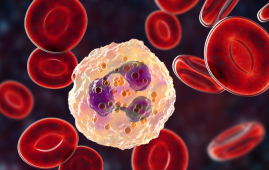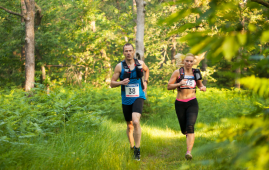

A new study published in Social Psychiatry and Psychiatric Epidemiology highlights a concerning connection between excessive screen time and manic symptoms in early adolescents. Researchers suggest that social media, video games, and texting may contribute to mental health challenges, emphasizing the need for targeted interventions.
Rising Screen Time and Mental Health Concerns
Adolescents in the U.S. now spend an average of eight hours per day on screens, a sharp increase from pre-pandemic levels. This rise has coincided with a surge in mental health issues, affecting nearly 29% of American youth. Despite these trends, the relationship between manic symptoms and screen use remains poorly understood. Manic symptoms—including high energy, impulsivity, sleep disturbances, and mood instability—are key indicators of bipolar-spectrum disorder (BSD), a condition that often emerges during adolescence and is associated with increased symptom severity.
The Study and Key Findings
Researchers analyzed data from 9,243 adolescents aged 10–11 years as part of the Adolescent Brain Cognitive Development Study. Six types of screen use were examined, including social media, video games, texting, video streaming, television, and video chatting.
The findings revealed that increased screen time correlated with a higher risk of manic symptoms after one year. Social media and texting had the strongest associations, even after adjusting for other factors. Problematic screen use (PSU), characterized by addiction-like behaviors, was found to mediate up to 58% of the risk of developing manic symptoms. Sleep disturbances also played a role, accounting for 9% of the risk.
Potential Mechanisms and Implications
The study suggests that social media and video games may overstimulate dopamine pathways, similar to addictive behaviors, potentially triggering manic episodes. Additionally, poor sleep hygiene linked to screen overuse may further exacerbate symptoms.
The researchers emphasize that reducing screen time and implementing digital literacy programs may help prevent early-onset BSD and improve adolescent mental well-being. Future research is needed to explore the biological and behavioral mechanisms underlying this association and to develop targeted interventions.
More Information: Nagata, J. M., Zamora, G., Al-Shoaibi, A. A. A., et al. (2025). Screen time and manic symptoms in early adolescents: prospective findings from the Adolescent Brain Cognitive Development Study. Social Psychiatry and Psychiatric Epidemiology. doi:10.1007/s00127-025-02814-6.
more recommended stories
 Phage Therapy Study Reveals RNA-Based Infection Control
Phage Therapy Study Reveals RNA-Based Infection ControlKey Takeaways (Quick Summary) Researchers uncovered.
 Pelvic Floor Disorders: Treatable Yet Often Ignored
Pelvic Floor Disorders: Treatable Yet Often IgnoredKey Takeaways (Quick Summary) Pelvic floor.
 Urine-Based microRNA Aging Clock Predicts Biological Age
Urine-Based microRNA Aging Clock Predicts Biological AgeKey Takeaways (Quick Summary) Researchers developed.
 Circadian Control of Neutrophils in Myocardial Infarction
Circadian Control of Neutrophils in Myocardial InfarctionKey Takeaways for HCPs Neutrophil activity.
 E-Cigarette Use and Heart Attack Risk in Former Smokers
E-Cigarette Use and Heart Attack Risk in Former SmokersKey Takeaways for Clinicians and Nurses.
 Ultramarathon Physiology: What HCPs Should Know?
Ultramarathon Physiology: What HCPs Should Know?Ultramarathon Metabolism: What Happens to the.
 High-Intensity Training and Oxidative Stress Insights
High-Intensity Training and Oxidative Stress InsightsNew Evidence Linking High-Intensity Training and.
 Sterilized Fermented Beverage for Obesity: New Evidence
Sterilized Fermented Beverage for Obesity: New EvidenceEarly Insights Into a Sterilized Fermented.
 36-Week Pre-eclampsia Screening May Reduce Term Risk
36-Week Pre-eclampsia Screening May Reduce Term RiskA New Preventive Strategy for Term.
 Cardiovascular Risk and Sudden Cardiac Death in Diabetes
Cardiovascular Risk and Sudden Cardiac Death in DiabetesRising Sudden Cardiac Death (SCD) Risk.

Leave a Comment